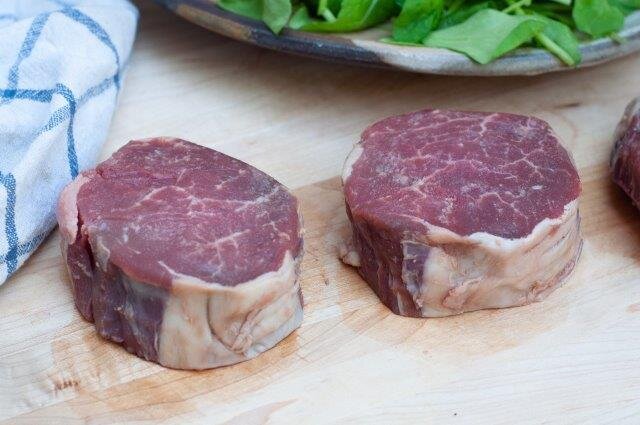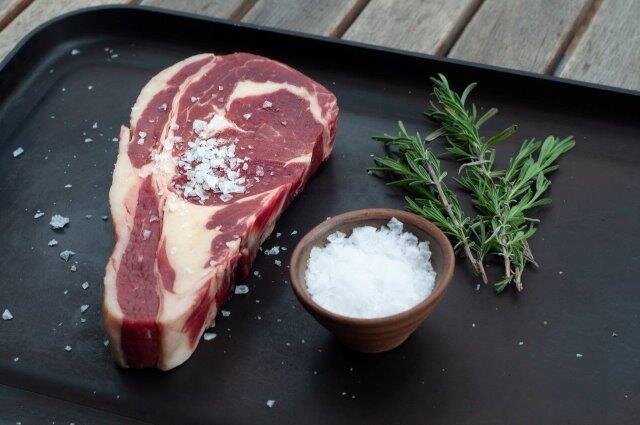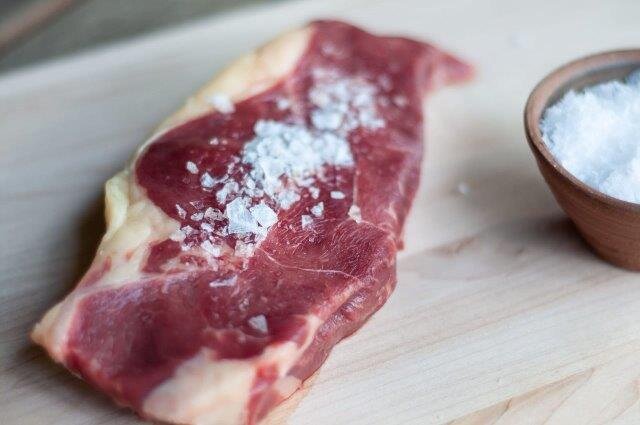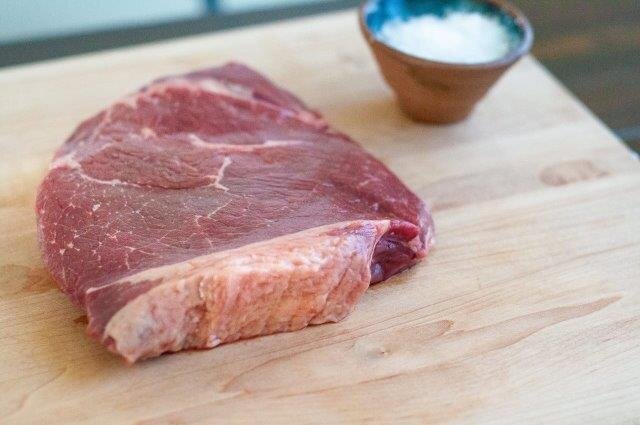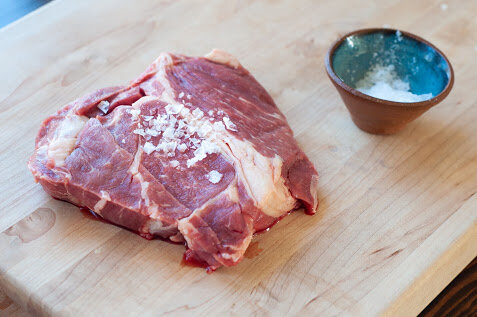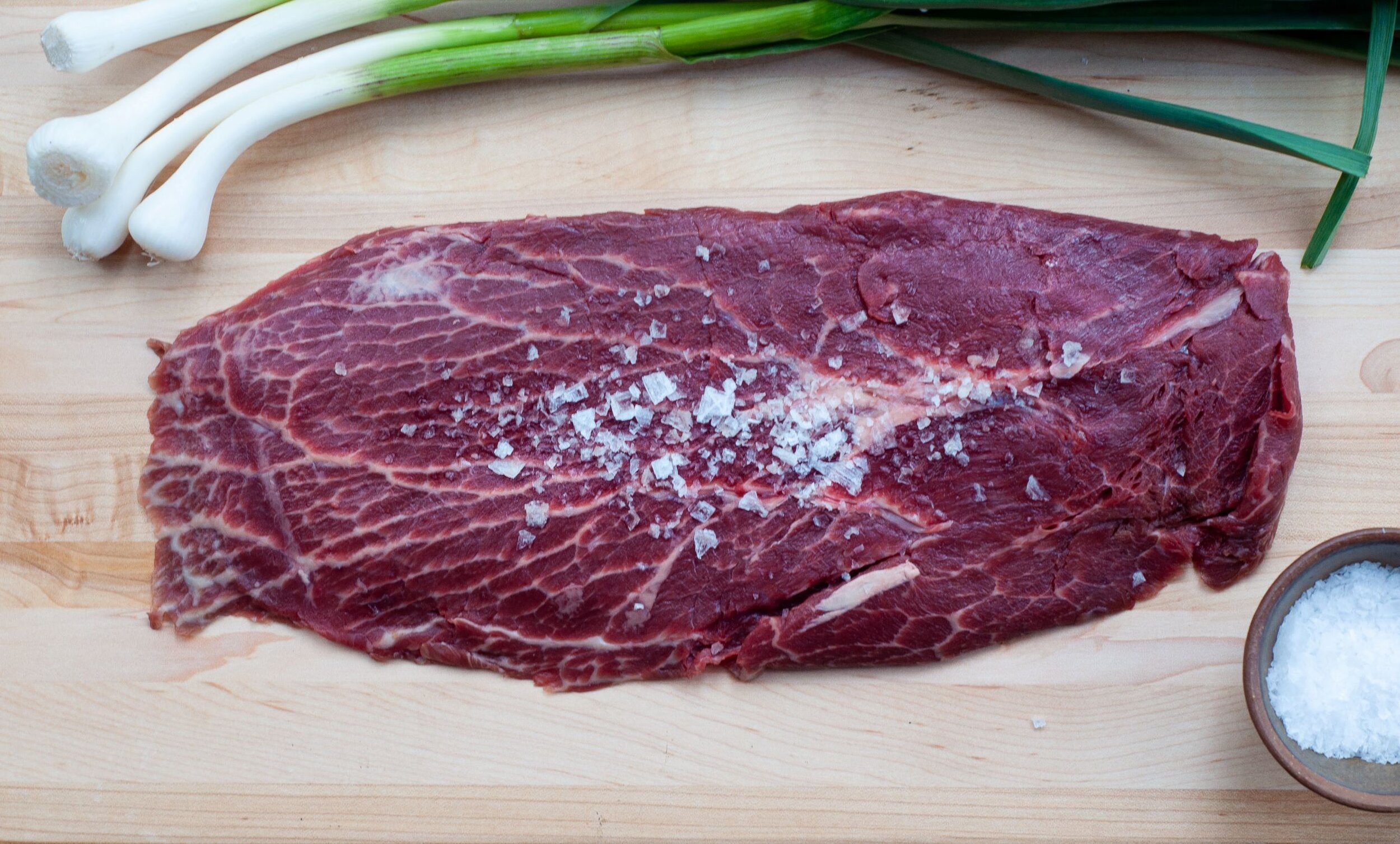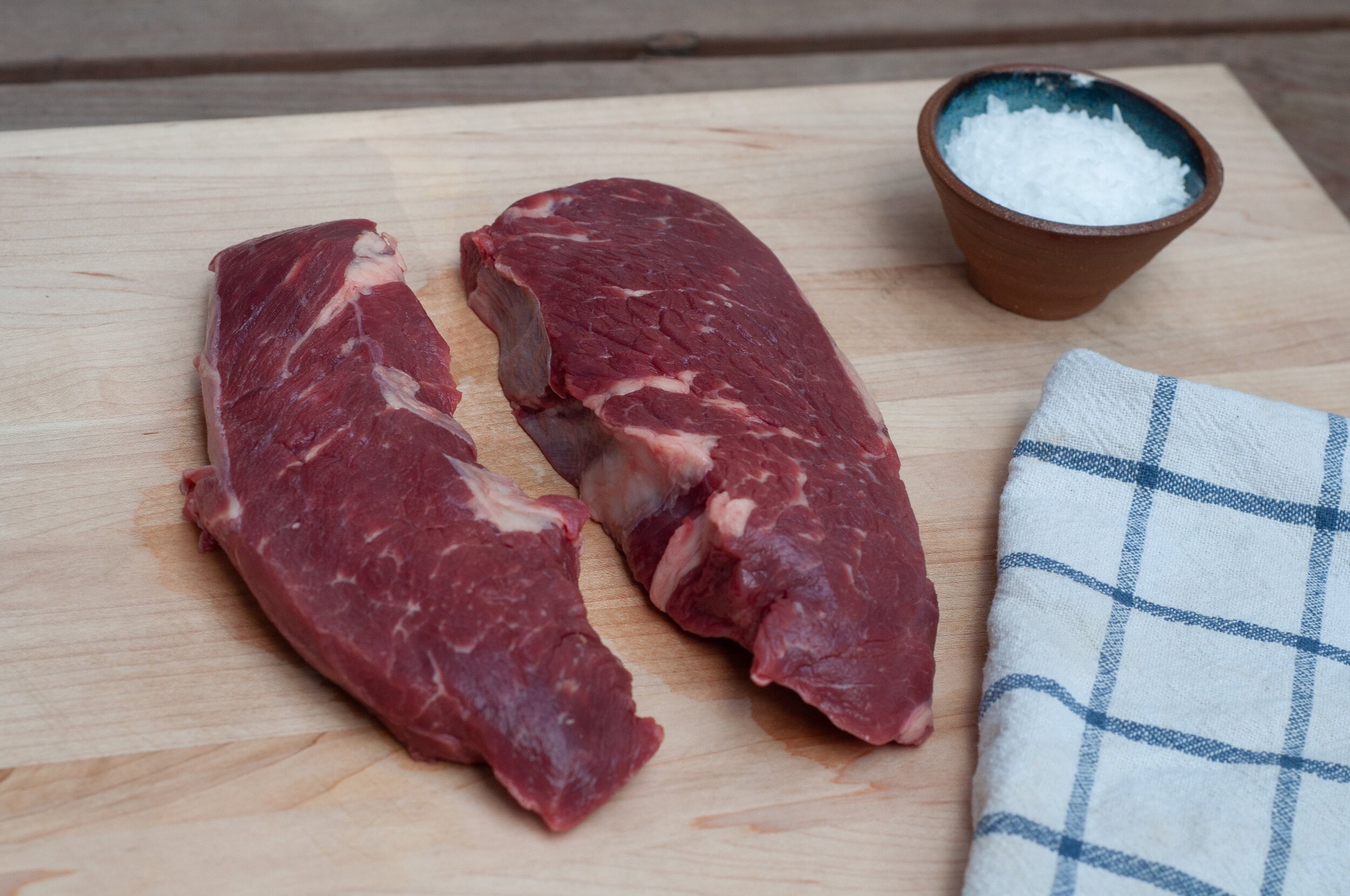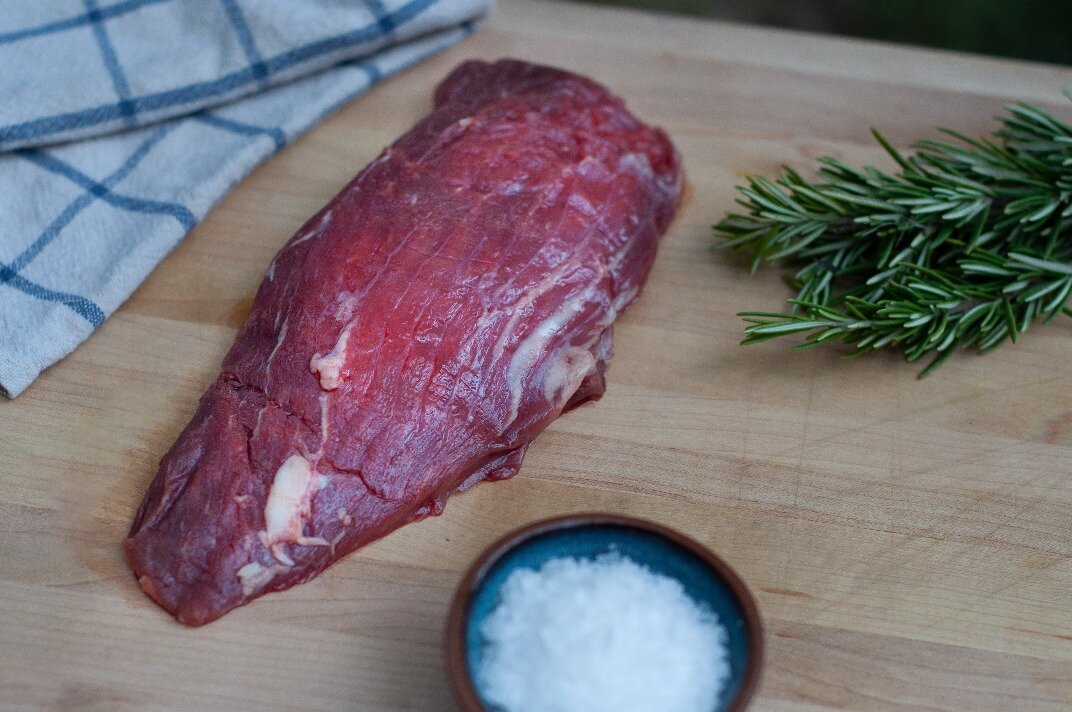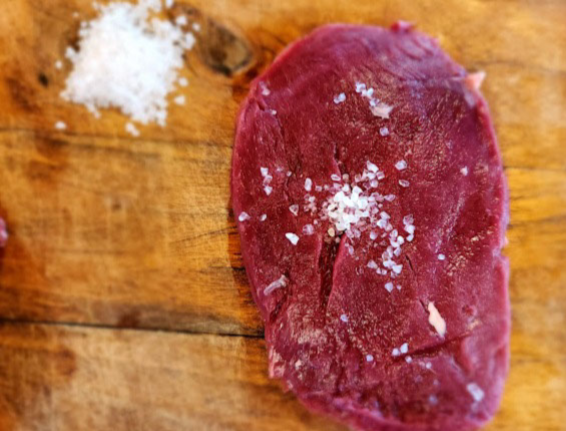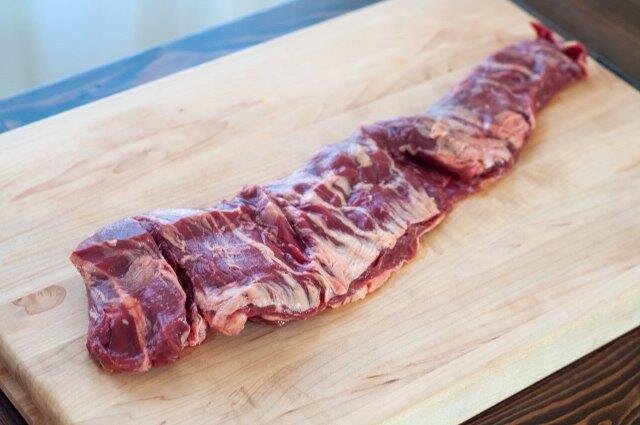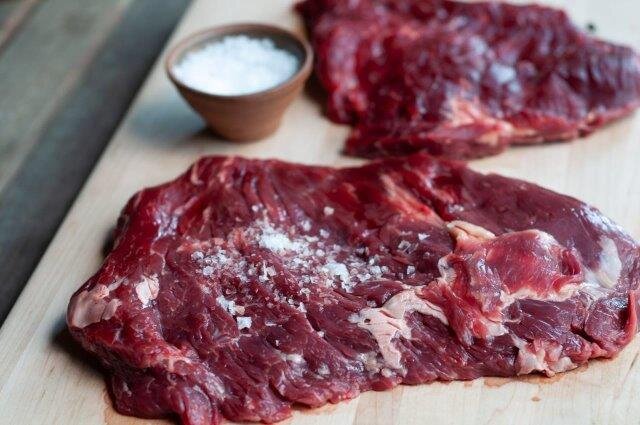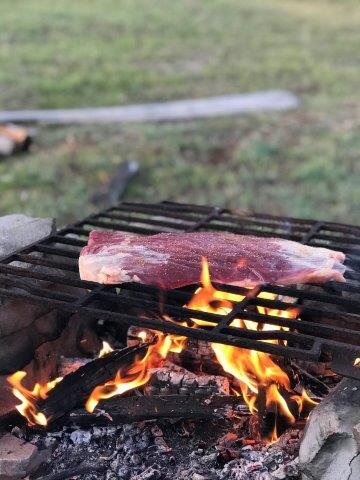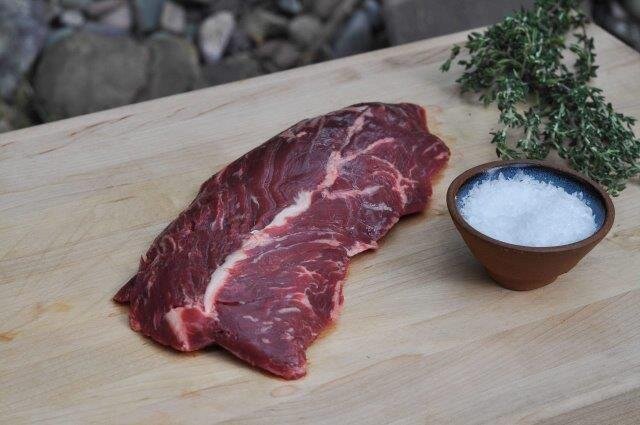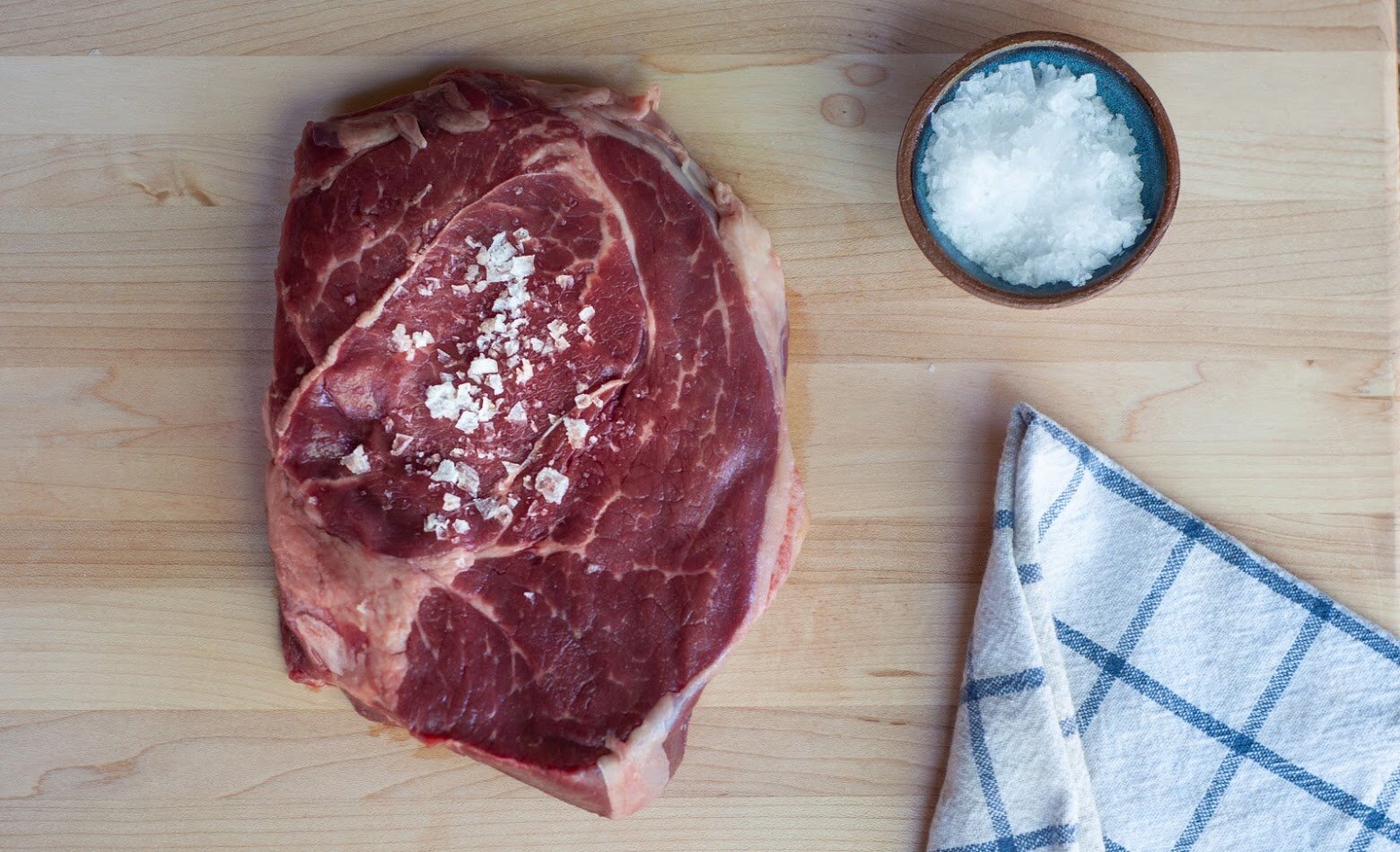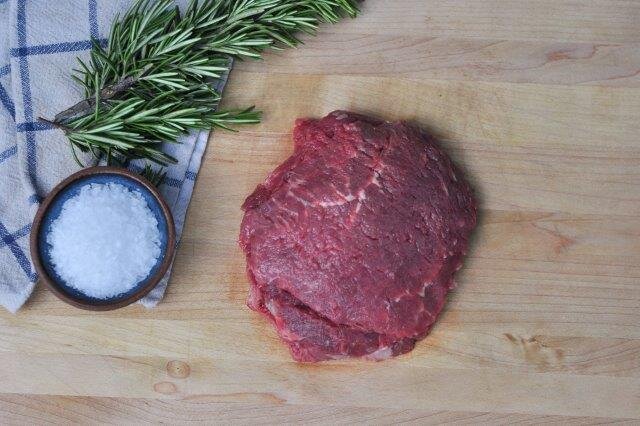Get to know the Steaks
General Tips for Cooking Grass-fed Steaks
Some of you out there are better chef’s than I am, and need no help preparing your beef. However, I still do get plenty of questions for recommendations on cooking or cut selection from customers. So this is a quick and dirty list of some general preparations tips that I’ve found helpful, and a quick guide for sorting through the different cuts offered in our store. There are a ridiculous number of ways to cook your steaks. But whether you are grilling, smoking, broiling, pan searing, or using su vide, a few of these tips can go a long way towards a delicious result.
Thoroughly thaw your steaks, and in a perfect world let them come to room temperature before cooking. If the middle of the steak is frozen or cold, you may burn or overcook the outside before the inside comes to temperature.
Dry your steaks well before cooking. Moisture on the surface can create steam, and prevent the surface of the steak from getting hot enough to brown through the Maillard Reaction.
Don’t overcook them. While everyone has their preferred level of “doneness”, in general it is recommended to not overcook grass-fed beef. It tends to be a little leaner than grain-fed. Medium rare to Medium is recommended, as more can sometimes dry out the steak. This is also more important for leaner cuts, like tenderloin, than say a more marbled cut like a Ribeye.
If you are cooking thicker steaks, consider the “reverse sear”, or cooking the steak at a low temperature until it is nearly up to temp, before finishing by searing it for a few minutes at high temperatures. (Searing first and then finishing at lower temperatures can work too)
Let your steaks rest! Cutting into a steak before it rests prevents the juices from redistributing throughout the steak, and causes it to leak out on to the cutting board. Let them cool for 5-7 minutes, or until the center cools to around 120 degrees Fahrenheit.
Cut your steaks across the grain. This is more important for some larger grained steaks like flank and skirt, but is good advice all the time for a more tender eating experience.
Trouble Shooting
My steaks are a little dry.
Are you over cooking them?
Are you letting them rest?
I’m not getting a good browning when I sear my steaks.
Are your steaks dry before going on the grill?
Are you letting your pan or grill get nice and hot before you put the steaks on?
I’m burning the outside, but the inside is still purple
Were the steaks fully thawed and brought to room temp before cooking?
Are you cooking thicker steaks? While I love thicker cut steaks, they do take a little extra care. Have you tried the reverse sear? Cook the steaks at a lower temp in the oven, or smoker, or sus vide until they are just below your desired temp, then pull them out and sear them for a minute or two on a piping hot pan. This is the most fool proof method I know for getting great steaks every time. The slow cook brings the whole steak up to temp for desired doneness, and further dries off the surface of the meat, and then the sear gives you that delicious crust on the outside.
Getting to know your steaks - The classics
While there are plenty of great rubs and recipes out there that are fun to try, these don’t need anything more than salt and pepper, a hot grill or pan, and being cooked to your desired temp. They are the steals most commonly found on restaurant menus. (Both because they widely recognized as high quality steaks, and because there are enough of them per animal to satisfy demand)
Tenderloin (filet mignon) - Found in the Loin Primal, this is the most tender cut of beef on the animal. These steaks melt in your mouth and are a great way to treat yourself. I sometimes find tenderloin from restaurants to be too bland for my taste, but I think grass-fed tenderloin steaks have both tenderness and flavor.
Ribeye (rib steak) - Found in the Rib Primal. Well marbled. Tender, juicy, and delicious. This steak is many meat lovers favorite.
New York - Another steak from the Loin Primal. A little bit leaner than the Ribeye, but very tender. (Often ranked as the 2nd or 3rd most tender cut of beef)
Top Sirloin Steak - From the top portion of the Sirloin Primal, this steak is a classic. Not quite as tender as a New York, not quite as marbled as the Ribeye, but still tender with incredible beefy flavor. For this reason it is may be my favorite in this group. (Note: I didn’t picture it here, but the “Tri-Tip, is another part of the sirloin primal. This isn’t quite as tender as the sirloin, but can still make great steaks, but we usually keep it as Tri Tip roasts, which are incredible smoked or slow cooked)
T-Bone Steak (Porter house) - We don’t always have these in stock, but it is worth mentioning because many customers choose to have them kept when they order custom halves and wholes. This is actually a combination of two of the above steaks. It is a piece of the vertebrae, with the Tenderloin on one side and the New York Strip on the other. The tenderloin muscle gets smaller as it moves towards the front of the animal, so T-bones have varying sizes of tenderloin attached to one side. A “Porterhouse” usually has a larger piece of the tenderloin.
“Butcher’s Cut” Steaks
These steaks are lesser known, and there are fewer of them per animal, but they are still delicious grilling options. Each of these steaks can be seasoned and thrown directly on the grill or in the pan.
Chuckeye -Also known as the “Chuck Ribeye”, this cut comes from the same muscle as the Ribeye as it moves from the Loin area to the chuck area of the animal. There are about 2 good chuckeye steaks that can be kept out of each chuckroll, and 4 on each animal.
Flat Iron - From the Chuck Primal, these steaks are peeled directly off of the shoulder blade, and are ranked as either the 2nd or 3rd most tender steak on the whole animal. Flat, thin, and perfect for throwing on the grill.
Denver - Another single muscle that can be isolated from the chuck primal, these steaks have a great combination of marbling, flavor, and tenderness. They are my current favorite.
Oyster - Also known as the spider steak. A small steak cut from a depression in the Aitch bone, or hip bone, there are only two of these per animal. They are loaded with marbling and flavor. They are small and thin, so cook quickly with just a couple minute per side.
Teres Major - Again a single muscle isolated off of the outside of the chuck primal, there are also only 2 of these per animal. Consider cooking whole and then slicing into medallions similar to tenderloin filets.
Merlot - Also known as the “velvet” steak due to its incredibly fine grained muscle fibers, this steak is a treat. There are only two per animal, and the come from the beef heel, just above the shank. Like most of the cuts from this area of the animal this steak is very lean and flavorful. Unlike the others this steak is surprisingly tender. Sear this steak for a few minutes on each side, cook to rare or medium rare to avoid drying it out.
Larger Grained Steaks, the “flat” steaks
These steak cuts, due to their large grains and use in the animal, are a little tougher. However, those large grains make them ideal for soaking up marinades. When cooked right and cut across the grain (which makes them much more tender to eat) they are delicious. Marinade these or cover them in a dry rub, sear them on a grill or in a pan, and slice them across the grain for carne asada, fajitas, steak salads, and more.
Skirt Steak - the “king of Fajita meat” this long, thin, large grained steak was the original cut used for traditional Fajitas.
Bavette Steak (Bottom Sirloin Flap, or Flap steak, skirt steak) - Bavette comes from a similar region as the flank steak. It has a similar grain structure and flavor to a skirt steak, but it is bigger, wider, and thicker. Bavette and Flank are my favorite cuts for Carne Asada.
Flank steak - Flank, bavette, and skirt can mostly be used interchangeably, but flank steak has smaller grains and is a little more tender than skirt steak.
Hanging Tender (Hanger Steak) - This cut comes from the diaphragm of the animal. There is only one of these per animal, and it can be damaged during the process of splitting the beef halves, so it takes some careful butchery. However they are a real treat. Perhaps the most tender of all these larger grained steaks, it also comes with incredible beefy flavor
The Economy Cuts
These steaks are not quite as tender as the classic or butcher cuts above, but they can still be delicious, are cheaper cuts of beef, and are perfect for many favorite recipes.
Sirloin Tip steak - this is my favorite steak in this group. It actually doesn’t come from the Sirloin, but is instead from the Round primal. More specifically, it comes from the “Round Tip” or the “Knuckle”. It has more marbling and is more tender than the other round steaks, and i think it is actually really similar to the Sirloin steak in eating experience. I often put this steak right on the grill and cook it to medium rare.
Top Round London Broil - Round steaks are leaner and a little tougher. However the top round has smaller grains and is more tender than the bottom round. It is a great steak to marinade and broil, slow cook, or slice and use in soups, stews, stir fry’s, and other sauce heavy dishes.
Cube Steak - this is steak that has been mechanically tenderized. It can come from anywhere, but we typically keep it from the top round, bottom round, or eye of round. This is a great cut for chicken fried steak or any recipe with gravy. It is also great in slow cooker soups and stews.
That certainly isn’t a comprehensive list of all the steaks you can keep off of an animal, but it does cover most of what we offer currently in our online store. If and when we add more cuts, I’ll try to remember to update the list!
I hope someone out there finds this helpful:)
By: Logan Mannix

